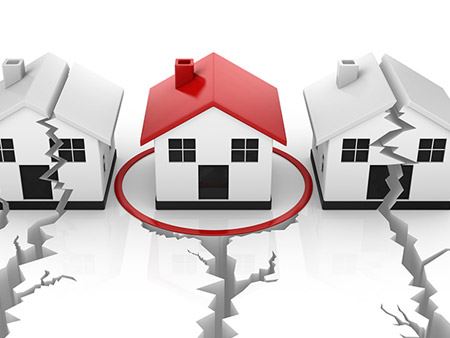Quake Risks Are Real
Are you ready for the Big One? The Risks Are Real.
According to a 2015 study by the U.S. Geological Survey (USGS), the likelihood that a magnitude 8.0 or larger earthquake will strike California in the next 30 years is about 7%. Perhaps more troubling, the probability of a magnitude 6.7 quake — the same as the devastating 1994 Northridge quake — is higher than 99%. Despite these odds, only about 11% of California homeowners currently have earthquake coverage.1
California has experienced the most earthquake damage in recent history, but the USGS reports that 42 states are exposed to earthquake risks.2 Moreover, USGS research has concluded that growing seismic activity in some states is most likely related to oil and gas production.3
Unfortunately, many people may not know that damage from earthquakes is not covered by standard homeowners, renters, and business insurance policies, though separate coverage is often available.
Catastrophic Coverage
Earthquake insurance helps provide financial protection from the shaking and cracking that can destroy buildings and their contents. It also covers debris removal and may pay for some extra living expenses while the covered home is being repaired or rebuilt.
Generally, earthquake policies are designed to help protect homeowners from suffering a total loss on their property. As a result, most policies carry a deductible ranging from 5% to 20% of the structure's replacement value. Policy rates and deductibles depend on the age and construction of the home and how likely it is for earthquakes to occur in the region.
Supplemental policies are available through private insurers; in California they are also available through a state-run program. A private-public partnership called the California Earthquake Authority (CEA) offers homeowners an earthquake policy with a 10% or 15% deductible. The coverage limit is typically the insured value of the home as stated on the accompanying homeowners policy. The CEA policy contains exclusions and special limits of coverage. Of course, the entire policy should be read for what is and what is not covered.
Man-Made Threat
Waste-water disposal related to fracking has been blamed for inducing earthquakes in places where they were once uncommon. The USGS now publishes an earthquake hazard map that includes both natural and human-induced quakes.
The states at highest risk of man-made earthquakes are Oklahoma and Kansas, but other states have also been affected. This puts an additional 3.5 million people in harm's way, and structures in these regions are not likely to have been built to meet seismic safety standards, as they have been in California, making them especially vulnerable.4
Homeowners who live near oil and gas fields should look closely at earthquake endorsements to make sure they do not exclude seismic events caused by human activities.
Early-warning systems are already operating in some countries, including Japan and Mexico, and scientists are working to develop one for the United States. Even so, early detection can only provide a few seconds or minutes to prepare for the shaking. You may want to discuss whether you have the appropriate supplemental insurance coverage with your own agent, based on your specific situation and the location of your property.
1–3) Insurance Information Institute, 2017
4) U.S. Geological Survey, 2017
This information is not intended as tax, legal, investment, or retirement advice or recommendations, and it may not be relied on for the purpose of avoiding any federal tax penalties. You are encouraged to seek advice from an independent professional advisor. The content is derived from sources believed to be accurate. Neither the information presented nor any opinion expressed constitutes a solicitation for the purchase or sale of any security. This material was written and prepared by Broadridge Advisor Solutions. © 2019 Broadridge Investor Communication Solutions, Inc.

